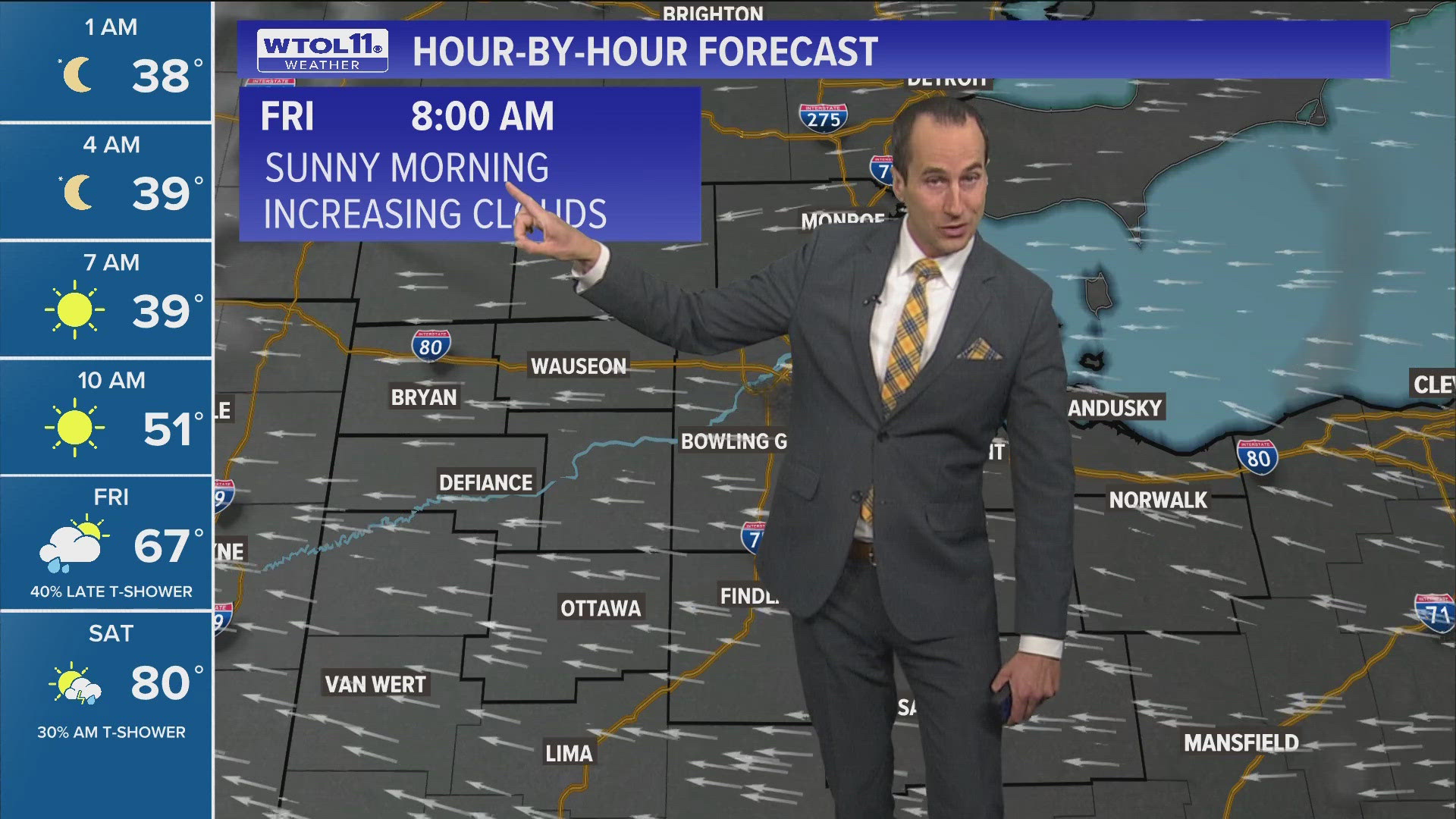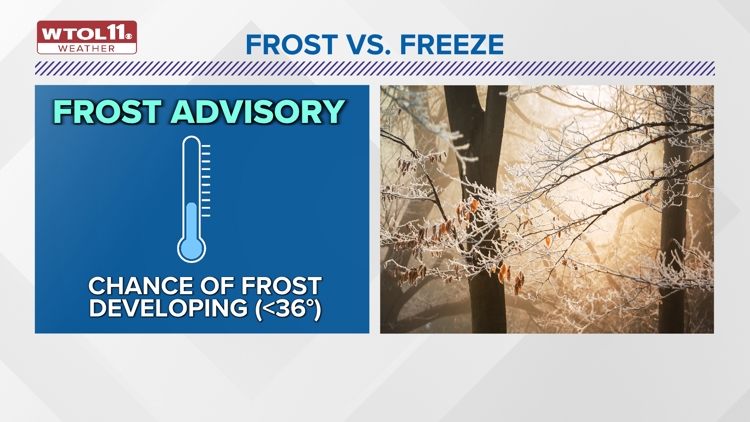TOLEDO, Ohio — When you think of spring, you likely imagine blooming flowers, green grass and mild temperatures.
Even though this spring has featured overall mild conditions, thermometers plunged to the 30s this week, causing frost and freeze across all of northwest Ohio and southeast Michigan.
So what is the difference between frost and freeze?
Frost develops when temperatures drop near 36 degrees. The National Weather Service often issues frost advisories for the risk of temperatures dipping down to the mid-30s.
A freeze occurs when temperatures plunge to 32 degrees or colder. The National Weather Service issues freeze warnings due to the risk of widespread frost, which becomes more prevalent and damaging with temperatures in the low 30s.
Friday morning will start off with frosty weather and temperatures will likely dip down to near 33 degrees in the Toledo metro.

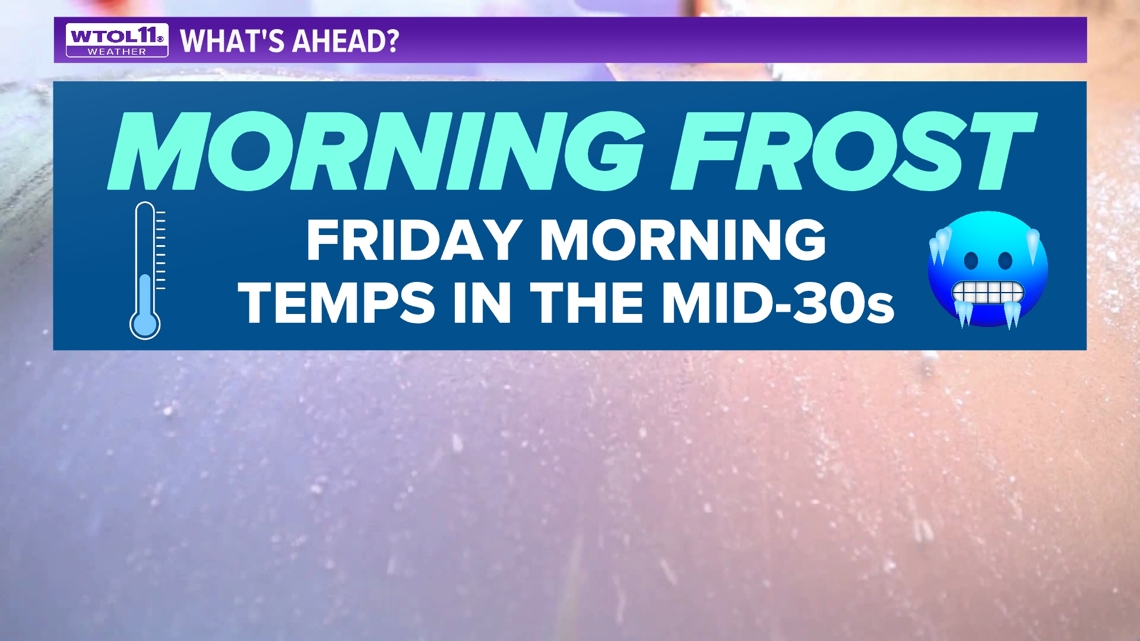
Frost advisories are in effect due to the risk of frost formation that may impact sensitive plants.
Covering up outdoor plants before bed can mitigate or prevent any negative impacts of the cold weather. While temperatures near 36 degrees generally don't cause any significant impacts to plants, colder conditions near freezing can prove more detrimental.
A hard freeze refers to temperatures plunging below 28 degrees and this extreme spring cold is often deadly to spring flowers and fruit crops.
On Thursday morning, Toledo recorded an official low temperature of 30 degrees, the coldest of the month of April. This temperature was the coldest since March 29.

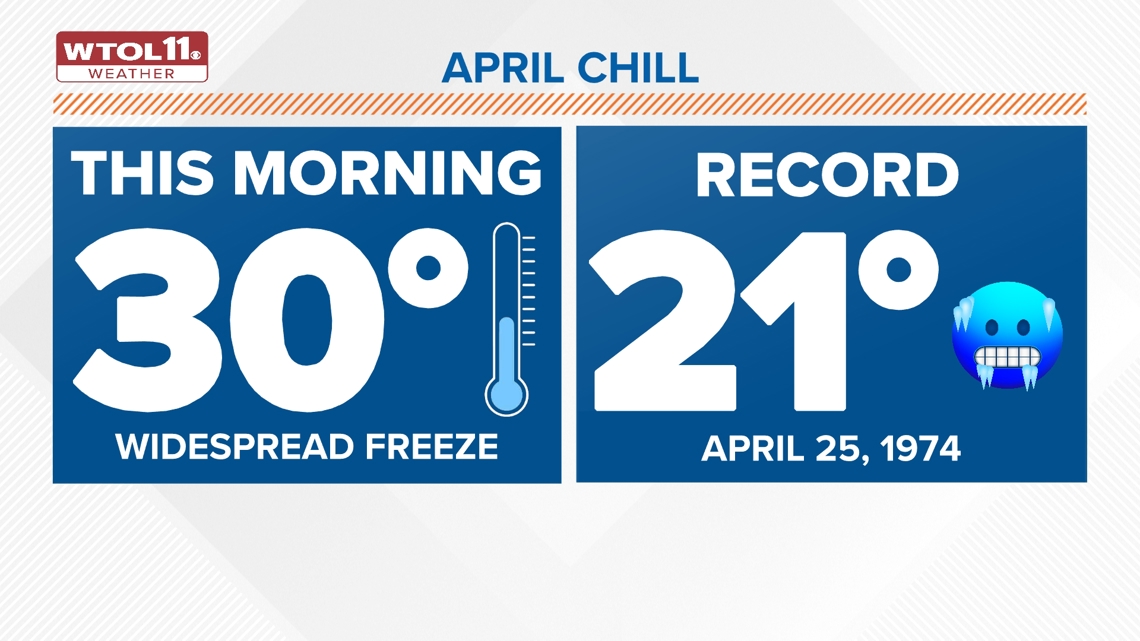
While freezing temperatures may seem unusual for late April, cold conditions are more common in the spring than you may think.
In the Toledo area, the normal last freeze of the season occurs on April 26. Thursday morning's freeze occurred right on schedule with what climatology tells us about spring temperatures.
While freezing temperatures grow increasingly uncommon during the month of May, frost usually still occurs later in the spring season. The normal last frost of the spring occurs on May 8.
Frost vs. freeze: What's the difference?
Some years, frosty weather can strike even into the month of June. In 1972, both frost and freeze occurred on June 11 as temperatures plunged to a record low of 32 degrees. While this historic cold spell was an outlier, it serves as a reminder that spring frost and freeze can happen very late in the season and area gardeners and farmers should stay weather-aware of exceptional cold.

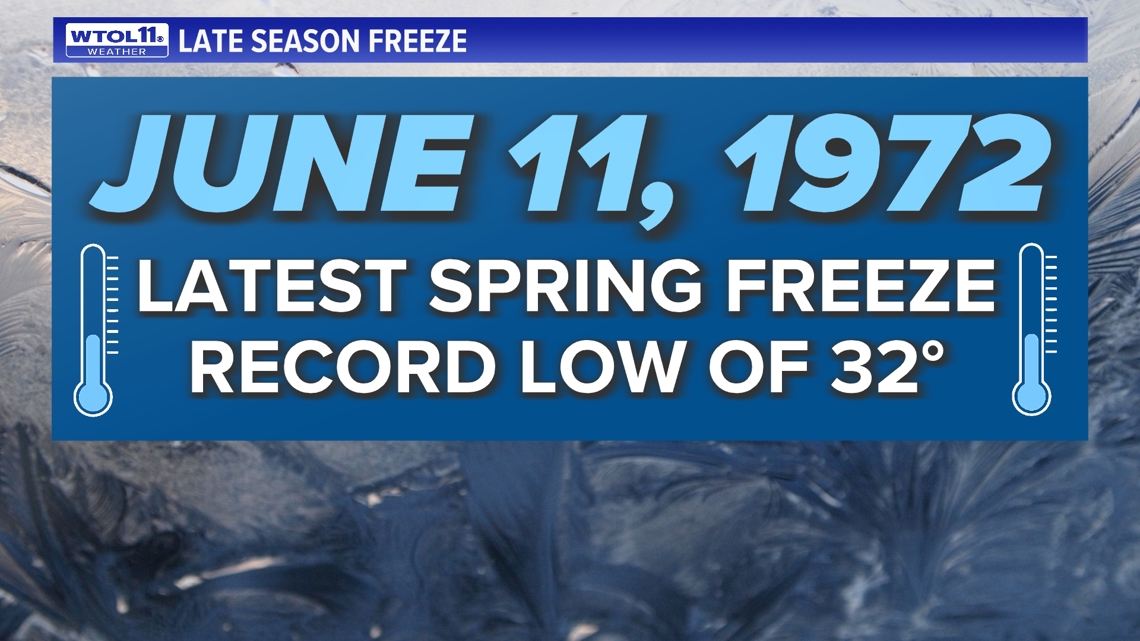
After a frosty Friday morning, the WTOL 11 Weather Team is forecasting a significant weekend warmup. Temperatures will surge to the low-80s with overnight low temperatures in the 60s. The mild trend will continue into the start of May.
While conditions may turn slightly cooler by the end of the 10-day forecast, frost and freeze are extremely unlikely. If frost does enter the forecast, you'll see it on-air and online on WTOL 11.

